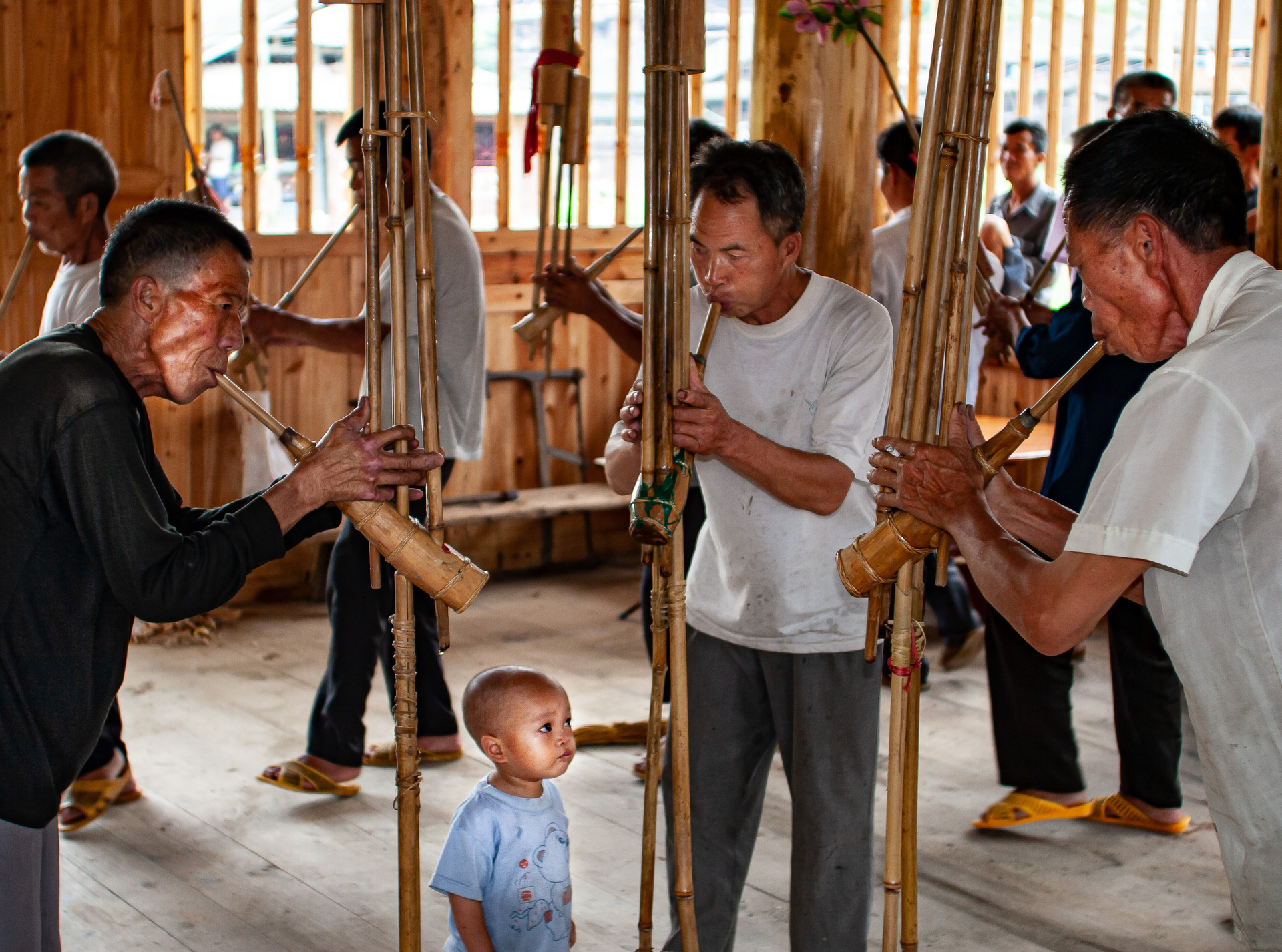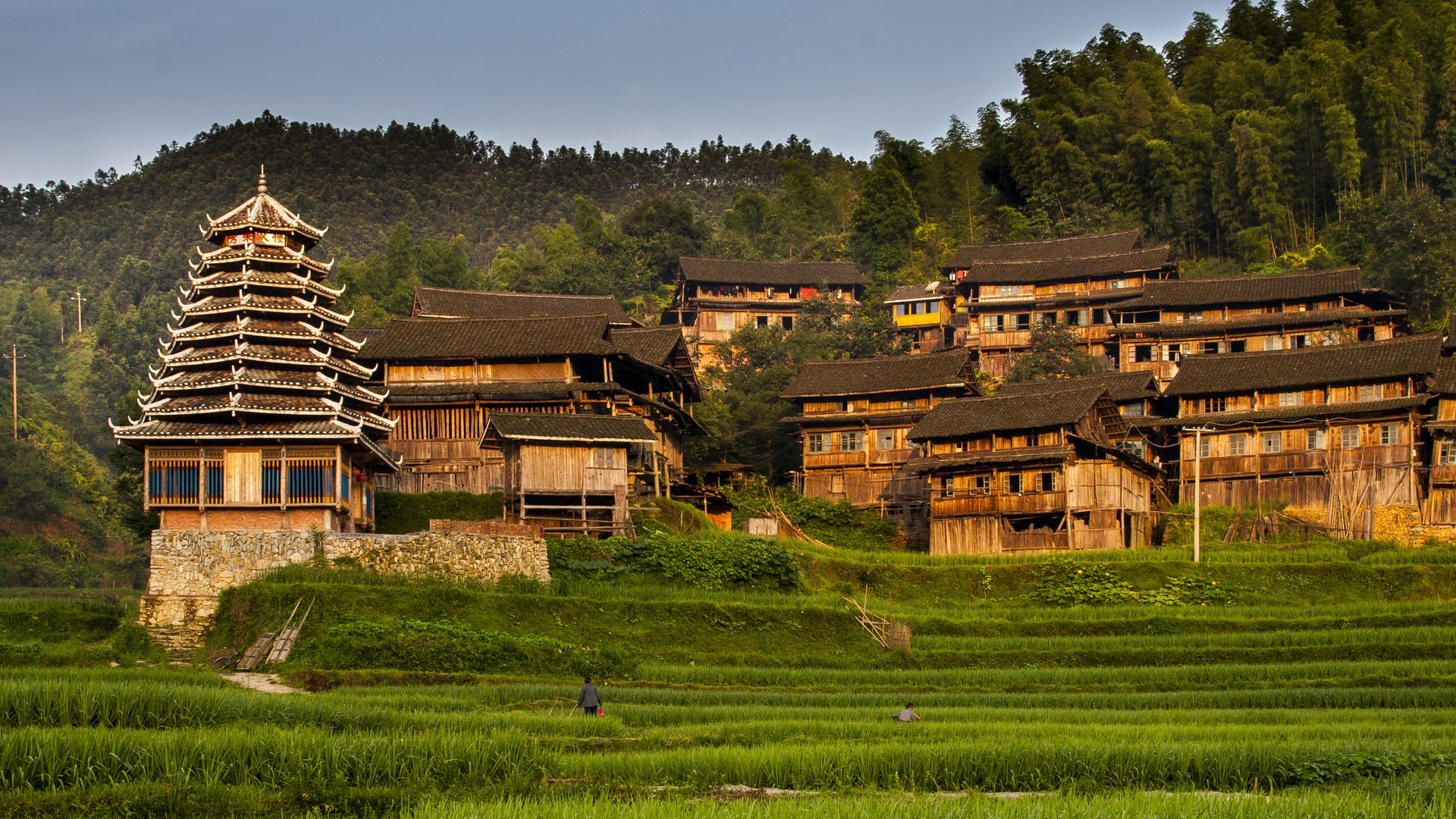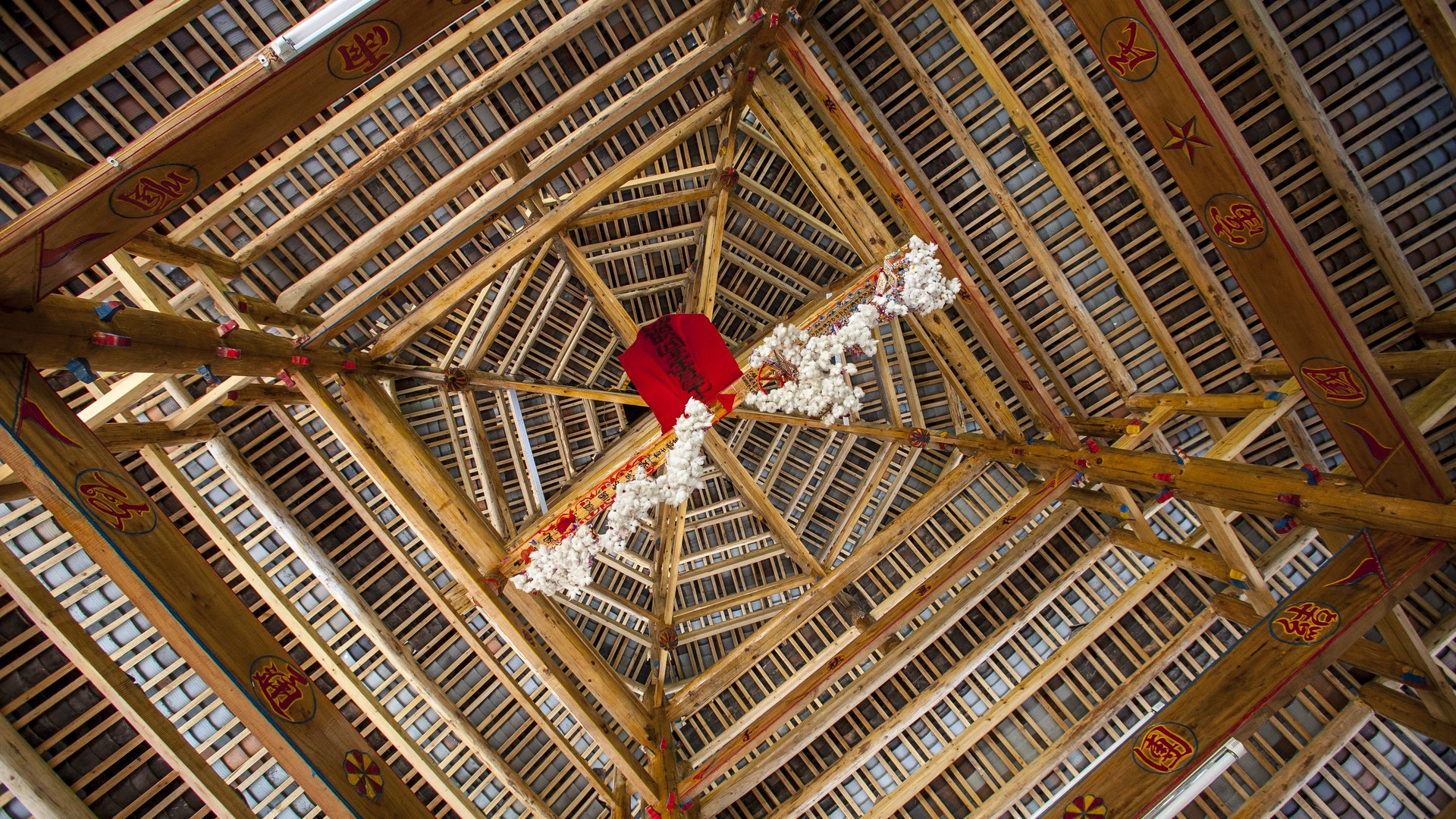Kam community and intergenerational education
The Kam people of Southern China maintain a deep connection with nature, reflected in their cultural emphasis on singing. Kam songs capture nature's sounds along with their history, stories and teachings. Kam children meticulously learn historical songs that preserve their traditions.

Uniquely significant relationship with plants
The Kam possess unique cultural heritage knowledge systems and identities. They have a very well-developed comprehensive ethnobotanical inventory. Their diverse pharmacopoeia of traditional medicine includes hundreds of useful plant species that have been employed for centuries to prevent and cure disease.
When a Kam baby is born, each family in the village visits the mountainside to plant a tree. Trees embody benevolent spirits, and their leaves have healing properties, as does the rainwater that collects on their branches. The Kam believe a tree’s spirit will ensure the peace and safety of the Kam village. If the trees are healthy and strong, the more prosperous and harmonious the village and its residents will be. In many Kam areas, ceremonies are performed to pay homage to the spirits of ancient and sacred trees, revered by the Kam. These trees are highly respected and protected.
The Kam way of life threatened by economic challenges
Economic demands are threatening Kam communities’ abilities to preserve their natural and cultural heritage and maintain their unique knowledge systems and identities.
The Kam people are primarily rice farmers, pisciculturists, agroforesters and carpenters. Professional carpentry is a skill that is passed down from generation to generation and it takes many years to master.


As it is very difficult to make ends meet as a Kam agroforester, in some areas, this is no longer a viable sustainable livelihood. Increasingly, Kam people are leaving their rural villages to work in cities, in order to earn enough money to feed their families and pay for their children’s mainstream education.
Preserving invaluable Kam heritage for future generations
Kam elders provide the vital leadership and continuity by conveying the importance of conserving Kam culture and livelihoods. To keep this alive, in practice, they need greater support for sustainable agriculture, pisciculture, agroforestry, traditional medicine, economic improvement and education.
Kam agroforesters need a better price for their forest resources. Kam children and young adults need financial assistance in order to complete their education.
Respecting and sustaining Kam intergenerational knowledge contributes to ensuring that inclusive quality education is available for equitable development and lifelong learning. In addition, it will ensure the integrity of the environment through proper management, which is essential for the health, safety and welfare of the Kam people.
Nagaemc sius keip wap pap jenc jemh.
Dens lagx nyenc Gaeml lyangp dos kgal.
Saemh xonc saemh map kgal menh dos.
Soh emv jenc nyangt yungt angl hac.
As wildflowers bloom on the mountainside,
So the Kam in their hearts love to sing.
From generation to generation, they pass on this gift of song.
So the melody in mountain, forest and brookside will ring.
Industrial sectors
- Agriculture, forestry and fishing
- Water supply; sewerage, waste management and remediation activities
- Construction
- Education
- Activities of households as employers; undifferentiated goods- and services-producing activities of households for own use
Habitat at the New European Bauhaus Festival and the STI Forum
This story is part of “Habitat: Embracing change in the post-2030 future”. Habitat was discussed at the side event “New habitats for the post-2030 future” during the New European Bauhaus Festival on 10 June 2022. At the STI Forum of 2023, a science policy brief recommendation on Habitat was published under the category “science-policy-society interface”: Enablers for transformative change to sustain people and nature-centred world. Download recommendation >
Contribution to story
- This is “HABITAT: Embracing Change in the Post 2030 Future” Exhibition designed and curated by Dr Sandra Piesik, 3 ideas B.V in collaboration with HABITAT Coalition and VITO
- Copy editing by Katleen Vandormael, Communication Manager G-STIC, VITO
- Cover image: Playing the lushen upon the completion of the new drum tower © John Amato
- “HABITAT: Vernacular Architecture for a Changing Planet” published by Thames & Hudson
- “HABITAT: Vernacular Architecture for a Changing Planet” published by Abrams
- “Habitat: Traditionelle Bauweisen für den globalen Wandel” published by DETAIL Special
- “Habiter la planète: Atlas mondial de l'architecture vernaculaire” published by Flammarion First Prize Winner at “J’aime le livre d’art”, Paris 2017
- “HABITAT: Arquitectura vernácula para un planeta cambiante” published by Blume
- “HABITAT: Vernacular Architecture for a Changing Climate’ published by Thames & Hudson UK, USA, and Shufuhsa
